
I have a short-short story in the March/April issue of The Kenyon Review Online! Check it out here.
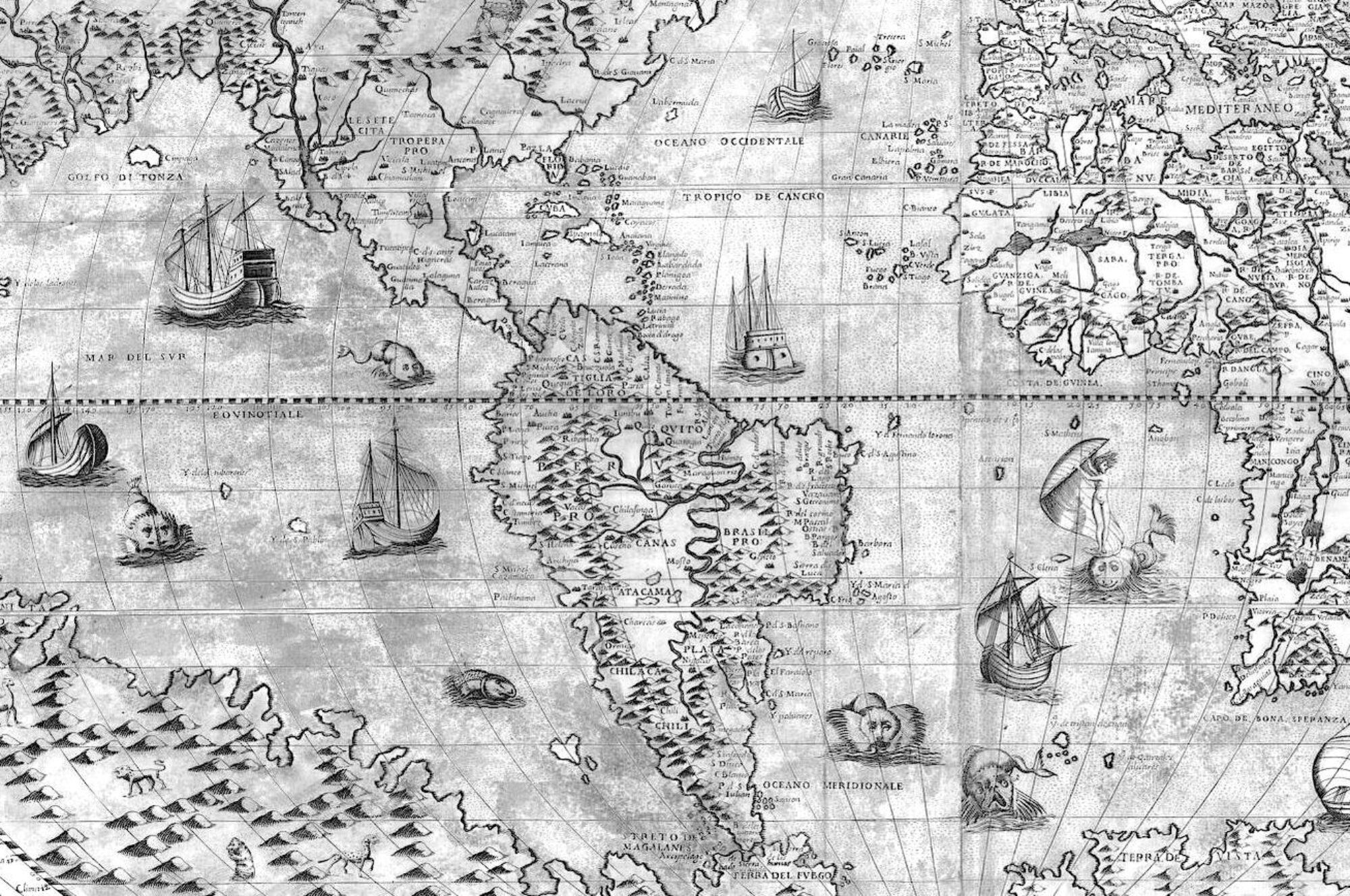
Writer, editor, translator

I have a short-short story in the March/April issue of The Kenyon Review Online! Check it out here.
Better late than never, posting for my friends who enjoy book lists. (MK, looking at you to post yours, too!). A round-up with quick takes on all the books I read in 2015. In order of their impact on me at the time.
12. The Folded Clock: A Diary (Doubleday, 2015) – Heidi Julavits

This book is a lot of fun, although the premise a bit gimmicky/misleading. Julavits clearly wrote this for publication, I wouldn’t call it a diary. There is still a withholding process, and the confessional feels bloggy, the last difficult veil is never pulled away. However, it’s thoroughly enjoyable and I loved the actual physical book – a soft, fabric-like cover. Highlights were her accounts of her obsessive friendships, and her relationship to the biography of Edie Sedgwick over time.
13. A Time of Gifts: On Foot to Constantinople: From the Hook of Holland to the Middle Danube (NYRB, 2005 ed., originally published 1977) – Patrick Leigh Fermor
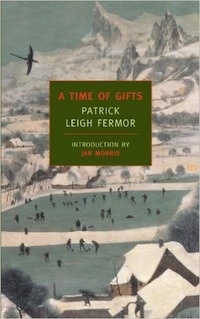
Parts of this are delightful, and parts I was slogging through. The slogging could be owing to my relative ignorance about European history and architecture, as Fermor is a fiend on these two subjects, going very deep. Otherwise, it’s a charming account of his trek across Europe in the 1930s, sleeping in barns and castles, partying, reciting Shakespeare, meeting old counts, witnessing the coming dark times in Germany firsthand.
14. Just Kids (Ecco, 2010) – Patti Smith
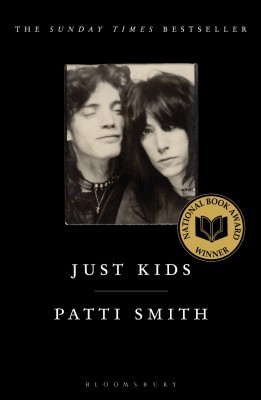
A semiannual New Year’s tradition. The book offers permission to draw, collage, write, worship dead artists, without apology.
15. Art Objects: Essays on Ecstasy and Effrontery (Vintage, 1997) – Jeanette Winterson
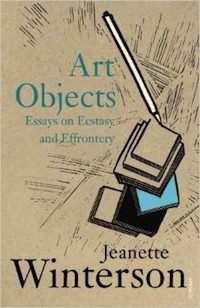
Art-affirming insights, and it made me want to read all of Virginia Woolf. At times off-putting because of Winterson’s early onset crotchetiness (dismissing all pop culture) and defensiveness. I think she’s deliberately taking up Gertrude Stein’s voice (in the mode of proclaiming her own genius) and Virginia Woolf’s opinions (e.g., trashing Joseph Conrad for not being a native English speaker).
16. Selfish, Shallow, and Self-Absorbed: Sixteen Writers on the Decision Not to Have Kids (Picador, 2015) – Meghan Daum, ed.
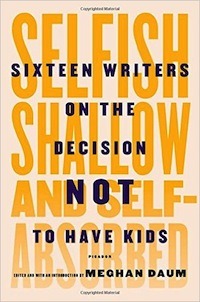
A big range of writers and views. I thought about a third of the essays were stellar (by Pam Houston, Sigrid Nunez, and Jeanne Safe), the rest a bit repetitive, the piece by by Lionel Shriver was downright offensive (I’m still drafting a rebuttal in my head). The hilarious piece by Geoff Dyer was my favorite. Terrible title, btw.
17. Sempre Susan: A Memoir of Susan Sontag (Riverhead, 2014) – Sigrid Nunez

Another angle, another glimpse of the fascinating, difficult and brilliant woman that was Susan Sontag. Her views, habits, influence. What an intense and strange arrangement, one that would have been difficult to resist in your 20s – sharing an apartment with your boyfriend and his mother, your boss, Susan Sontag.
18. Wabi-Sabi for Artists, Designers, Poets & Philosophers (Imperfect Publishing, 2008) – Leonard Koren
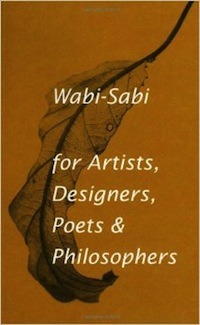
This book is always popping up in arty bookstores. I was intrigued by the idea of wabi sabi (appreciating the process of disintegration, that which is made of earth, asymmetrical… it’s complicated). The book was much shorter and simpler than I thought, although it seems to presupposes some knowledge of the tea ceremony ritual. Feel justified in loving a crumbling wall, the skeleton of a leaf. How would this relate to text/words/poetry?
19. Goodbye, Columbus (1959) – Philip Roth
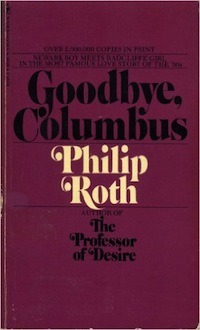
Roth was a gap in my reading. The worried aunt was my favorite character in this. Overall, its time seems to have passed (the little black kid at the library, the Jewish princess, the wise-beyond-his-years young writer – do we need them anymore?).
20-21. The Walking Dead, Books 1 & 2 (2009) – Robert Kirkman
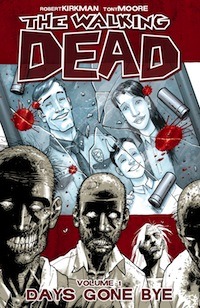
I couldn’t get into this series. Perhaps I’ve absorbed the zombie thing via cultural osmosis, but it didn’t seem to offer anything new.
BOOKS ABANDONED
Tropic of Cancer – Henry Miller (~20 pages)
An attempt to re-read this after hating it in college, because of the strong endorsement from Anais Nin. Not sure when I’ll ever be in the mood, though.
Primera memoria – Ana Maria Matute (~50 pages)
Perhaps to return to, an account of the Spanish Civil War from an adolescent’s perspective.
Chéri – Colette (~30 pages)
Another “to return to”, was not in the right place for this world of courtesans and finery…
Sicily: An Island at the Crossroads of History – John Julius Norwich (~100 pages)
I purchased for a trip to Sicily and carried the damn heavy thing around, but didn’t get too far. I will return to it!
She puts her fine finger on the issue here, analyzing a recently published book written by a woman:
“ ‘Chloe liked Olivia,’ I read. And then it struck me how immense a change was there. Chloe liked Olivia perhaps for the first time in literature. Cleopatra did not like Octavia. And how completely Antony and Cleopatra would have been altered had she done so! As it is, I thought …the whole thing is simplified, conventionalized, if one dared say it, absurdly. Cleopatra’s only feeling about Octavia is one of jealousy. Is she taller than I am? How does she do her hair? The play, perhaps, required no more. But how interesting it would have been if the relationship between the two women had been more complicated. All these relationships between women, I thought, rapidly recalling the splendid gallery of fictitious women, are too simple. So much has been left out, unattempted. And I tried to remember any case in the course of my reading where two women are represented as friends … They are confidantes, of course, in Racine and the Greek tragedies. They are now and then mothers and daughters. But almost without exception they are shown in their relation to men. It was strange to think that all the great women of fiction were, until Jane Austen’s day, not only seen by the other sex, but seen only in relation to the other sex. And how small a part of a woman’s life is that; and how little can a man know even of that when he observes it through the black or rosy spectacles which sex puts upon his nose. Hence, perhaps, the peculiar nature of woman in fiction; the astonishing extremes of her beauty and horror; her alternations between heavenly goodness and hellish depravity – for so a lover would see her as his love rose or sank, was prosperous or unhappy.”
-Virginia Woolf, A Room of One’s Own

I can’t stop reading “best of” lists. Book lists are irresistible, “best of” lists even more so. Here are a handful of recurring books on these lists that have definitively made it on my “to read” list. (I looked at best of lists from the NY Times, the LA Review of Books, McNally Jackson Bookstore, the LA Times, Words Without Borders, a couple of Flavorwire lists…probably others). I’m including the presses, because it is becoming increasingly apparent to me how the identity of a press matters and how important small presses are:
The Neapolitan novels (Europa Editions), the trilogy by Elena Ferrante, translated from Italian. These first came to my attention at my favorite Brooklyn bookstore, Spoonbill and Sugartown. Books that generate obsession obsession with these books. I also like how Ferrante has avoided all media and public appearances, such a rebellious stance in these times.
The Wallcreeper by Nell Zink (Dorothy, A Publishing Project). Sounds imaginative, wild, funny. Also, way to hit it out of the park, small press!
A Girl Is a Half-Formed Thing by Eimar McBride (Coffee House Press). Novel, Irish author. Written in its own sort of language. I was intrigued on hearing the title alone.
Citizen by Claudia Rankine (Graywolf Press). So many poets I know have been declaring that this is the book America needs right now, in the time of protests over racial injustice, the long-bubbling unspoken problems, tensions, violence.
The Unspeakable a by Meghan Daum (Farrar, Strauss and Giroux). Essay collection. I’ve read a couple of interviews with Daum where she says such smart and unusual things so succinctly. I also loved her essay about not having children, which is in here (first appeared in the New Yorker).
And on my “might read” list:
The Empathy Exams by Leslie Jamison (Graywolf Press). Essay collection, so much acclaim. An interesting subject.
On Immunity by Eula Biss (Graywolf Press). Non-fiction. I’m not that interested in the subject (the anti-vaccine movement), but I think she makes it about much more than this. I was also blown away by her writing in an essay I read in The Believe.
Stoner by John Williams (New York Review Books Classics). Reissues. I read an essay in praise of it and have seen it around. Slim and quiet, how I often like novels…
What I leave out of my work I leave out, discard, and overlook in life as well, because I do not think it is important. It weighs people down, and kills vision and spiritual perceptions. Too much upholstery. We are limited enough as it is without weighing ourselves down with facts which do not inspire, nourish, or liberate us. […] America suffers from too much realism, too much Dreiserism, too many Hemingways and Thomas Wolfes. My passion is for freedom from contingencies, from statistics, from literalness, from photographic descriptions.
–The Diary of Anais Nin, Volume Four
Echoing Breton grousing (in his Surrealist Manifesto) about descriptions of wallpaper in Dostoevsky. This volume has her struggling with being a prose stylist – she was only recognized by poets, they understood, but major publishing houses wanted her to be more like Steinbeck. She refused. I should give her fiction another chance, as I feel rather the same way about it. Her “Hemingways and Thomas Wolfes” could be replaced with “Updikes and Franzens”… Less upholstery = Lydia Davis, Grace Paley…